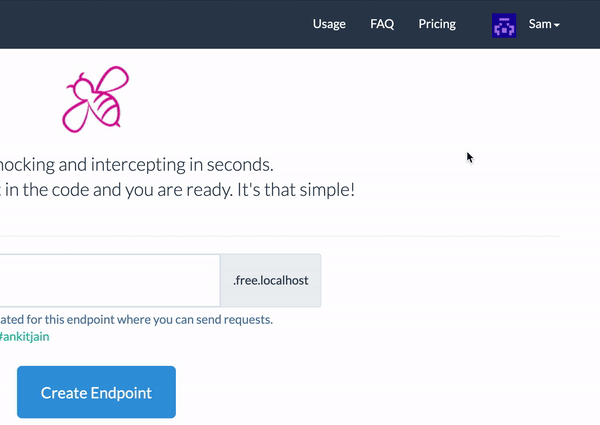API Overview & Authentication
Welcome to the Beeceptor API reference! If you're new to Beeceptor, be sure to create an account and explore all the features. Please note that Beeceptor APIs are available for users with Team plans and above.
Throughout this documentation, a mention of "Beeceptor endpoint" refers to the sub-domain name you have created.
Beeceptor APIs are accessible with the Team plan and higher. An active plan is required for the APIs to function properly.
API Base URL
All API calls must begin with the specified base URL.
https://api.beeceptor.com/api/v1/
Authentication
To authenticate each request, ensure you set the Authorization header with a valid API key. Below is an example of how to pass the HTTP header for API request authentication:
"Authorization": "14ac5499cfdd2bb2859e4476d2e5b1d2bad079bf"
Quick Facts:
- APIs are accessible for endpoints with an active Team plan or above (Pricing). If your subscription has expired, APIs will cease to work.
- Each API key is bound to a single Beeceptor endpoint, allowing you to have independent API keys for each endpoint. An endpoint can also have multiple API keys.
- Deleting an API key will revoke all access associated with that key. Please allow up to 5 minutes for the revocation to take effect.
- Keep your API keys secure by storing them in a safe location. Never share them publicly or commit them to code/version-control.
You can create and manage API Keys under account management.

JSON Rest APIs
Beeceptor offers JSON Rest APIs with the following integration behavior:
- Request and response bodies for all API calls are in JSON payload format. For POST/PUT requests, ensure you include the HTTP header
Content-Typewith the valueapplication/json. The same header can be expected in the response. - HTTP status codes are used by Beeceptor APIs to indicate success and failures:
- A successful API call will have a
200HTTP response code, unless explicitly specified otherwise. - For validation errors, a failed API call will return a status code of
400. Any other status code will be detailed in the respective API description.
- A successful API call will have a
- When using serialization and deserialization features of programming languages, it's advisable to ignore new/unknown properties in the response payload. This ensures your API integration won't break when new features are added in future versions. Stay updated with API documentation and adapt new features and changes.